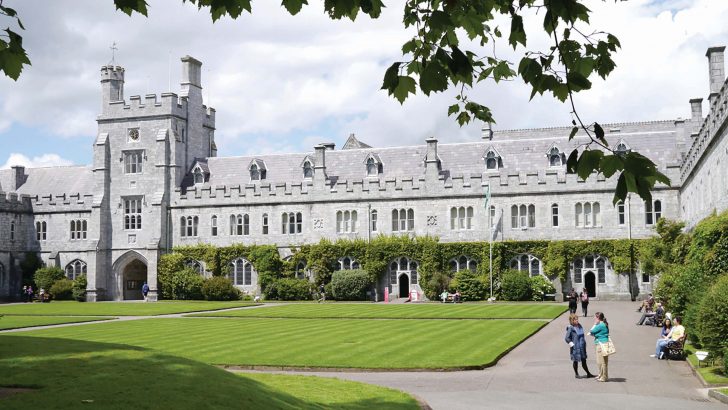Peter J. Drumm, First Professor of Biochemistry at University College Cork
by Ned Barrett (Clogher Historical Society, €15.00; Clogher Historical Society, St Macartan’s College, Mullaghmurphy, Monaghan; ; info@clogherhistory.ie)
Peter J. Drumm was born in Drumod, Co. Monaghan, on October 24, 1898. He attended Derrygooney National School and was a boarder at St Macartan’s College in Monaghan Town from 1911 to 1915. Obtaining a county council university scholarship, he enrolled at University College Dublin and graduated with a BSc in 1918, and was conferred with an MSc the following year.
He began his working life as a research chemist at British Dyestuffs Corporation in Huddersfield in England. He formed a good relationship with Prof. Robert Robinson, director of the research laboratory, and the professor who was later to be a Nobel laureate publicly commended his work. Drumm returned to Ireland in 1921 when he became an assistant chemist at Fine Chemicals Ltd in Dublin. However, within a year the company was in the hands of a liquidator. Drumm then secured an appointment as science teacher in his alma mater and held it until 1925.
Research
Drumm came to the chemistry department in UCC as the holder of a state research scholarship in 1925 and was appointed research assistant the following year. He was elected to a Rockefeller Foundation Fellowship at the Chemistry Institute for Medical Research in Heidelberg in Germany in 1931. There he witnessed the rise to power of Adolf Hitler and became aware of the Fuhrer’s attitude to academics and scientists; he referred to them in his rants as geistreiche Schwachlinge (smart Alec weaklings). Nor was Drumm unaware of the Fuhrer’s attitude to his colleagues of the Jewish race at the institute. Thus he was not surprised when in January 1931, just after his return to Cork, Jewish academics and scientists were being dismissed by the universities. Among them was a valued friend at the institute, Edgar Lederer, who was hounded out of Germany and Europe by the Nazis. At that time, 26% of the chemists and biochemists in German universities and research institutes were dismissed, 90% being forced out because of their race. However, those unaffected by the Nazi race laws, with few exceptions, remained in their posts.
Assistant lecturer
Drumm was granted leave of absence from UCC to act as visiting assistant lecturer in medical chemistry at the University of Edinburgh for the academic year 1936-1937. Back in Cork, he was appointed Professor of Biochemistry in March 1946. Thereafter, as was noted in the Cork University Record, he put his experiences at Heidelberg and Edinburgh to good use in conducting his department to the highest standards.
In the meantime, UCC was expanding not least because of the acquisition of the grounds of the old Cork Jail, which was contiguous to the college. There was a plan to construct a medical centre on the site, which would have included a premises for the department of biochemistry. However, owing to the influence of President O’Rahilly, a department of electrical engineering was built on the site instead. It was hinted that Drumm’s immense disappointment at this outcome could have contributed to his sudden and early demise on January 14, 1952.
List
The author provides a comprehensive list of Drumm’s scientific publications. He also describes his extended family. Among the best-known was his eldest brother, Dr James J. Drumm, inventor of the electric storage battery – the ‘Drumm battery’ – which was installed in the Drumm battery train in 1932. Two other brothers, Charles and Patrick, were ordained for, and served in, the Diocese of Clogher.
This is an interesting and valuable monograph on a distinguished academic and scientist who contributed to the remarkable development and repute of University College Cork in the 1940s and early 1950s under the presidency of Alfred O ‘Rahilly.


 University College Cork
University College Cork 